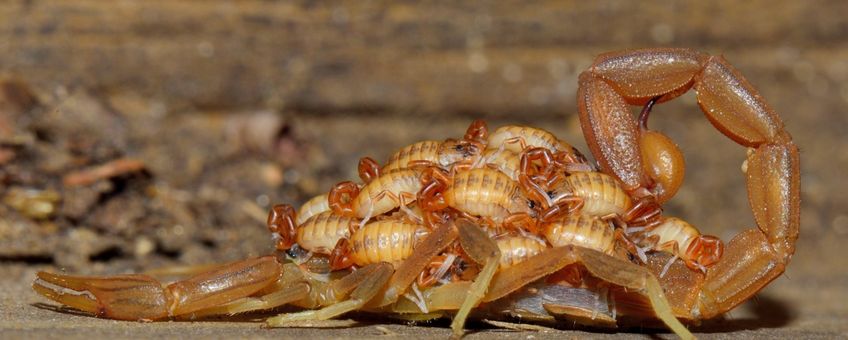
Arachnids (spiders and scorpions): 25 new records and 20 species new to science on the ABC-islands
California Academy of Sciences, Carmabi, Dutch Caribbean Nature Alliance (DCNA)Arachnids play an important role within the ecosystems of the ABC Islands. Although often seen as pests, these species are crucial in controlling insect populations. Knowing how important these creatures are, it’s surprising to learn that there has only ever been one scientific survey documenting these species on the ABC islands, and it was written in 1887. Since then, although there have been papers written on specific species, there have not been any surveys or inventories to fully describe the arachnid population.
The study
In order to provide an update to this 1887 survey, a research group collected arachnids over the course of three months (November 2004 - January 2005) from Bonaire and Curaçao. Arachnids on Aruba were collected over 2 days in October 2004. Specimens were collected from a variety of different areas including both urban and natural areas. The goal of the study was to collect specimens from different habitats to best capture a diverse representation of the species present on the islands.
The results
In the end, over 750 specimens were collected and identified, representing members from arachnid orders: Scorpiones, Amblypygi, Pseudoscorpiones, and Araneae. From this, there were 1 species of scorpion, 1 species of amblypygid (tailless whip scorpion), 2 species of pseudoscropions and 76 species of spiders. Furthermore, of these species, 25 were previously unknown to be present on these islands and 20 species were new to science.
Unlike Bonaire and Curaçao which are separated from South American mainland by a deep oceanic trench, Aruba is connected to the South American Continent. In fact, plant and animal species on the island may be closely linked to their South American counterparts as it is believed Aruba was connected to the mainland during the last glacial sea-level drop 19,900 years ago. Although it’s difficult to say since specimens were only collected for two days, this study didn’t find much overlap with the species of Curaçao and Bonaire. In addition, researchers identified two species which had not been previously described. It’s possible, given more time to collect samples, additional specimens would have been documented increasing the overlap with the other two islands.
On all three islands, more specimens were collected within natural areas than urban areas. Curaçao had the greatest number of species documented, which could have been a result of specimens being collected over a longer period of time and from more varied locations. In general, it is expected that Curaçao would have a more diverse ecosystem as the island has more varied vegetation types and plant species along with greater elevational differences, higher annual rainfall, and less habitat degradation than Bonaire.
Slave trade connection
CARMABI biological research station Curaçao managed to capture a gnaphosis spider (Australoechemus celer), a species previously known to only inhabit Cape Verde islands. The origin of this species is unclear. It could be that this spider represents a native population which may have been introduced long ago when slaves were kept on Cape Verde before being shipped to Curaçao. Or the other way around: introduced to the Cape Verdes islands from Curaçao/South America.
Links
Arachnids play a very important role in the environment, and the first step to ensuring their future is to properly understand which species are present on each island. This study represents an important start to updating the arachnid database, however, further research is required to fully describe the arachnids found on each of the islands. It is exciting to think what new species might be found, or what connections to other islands might be made given each island’s rich history.
Report your sightings
Have you observed Arachnids (such as spiders and scorpions)? Please report your sighting on the website DutchCaribbean.Observation.org or download the free apps on that website.
This free website and free apps can be used not only by biologists but by all citizens to report any animals and plants and is available in more than 40 languages. It is now also being translated to Papiaments. The species reports by local communities are very valuable for the nature conservation organization to learn and protect the species on our islands. For more information contact research@dcnanature.org.
More information
- on Arachnids: contact Sarah Crews at screws@calacademy.org; Twitter: @sarahnopidae; Instagram: @cas_arachnerds or website: sarahnopidae.com
- Publication: The Arachnids (Arachnida) of Aruba, Bonaire, and Curaçao in the Caribbean Journal of Science
Text: Tineke van Bussel, DCNA
Photo: M. Oversteegen and C. de Haseth (lead photo: scorpion Centruroides testaceus)
